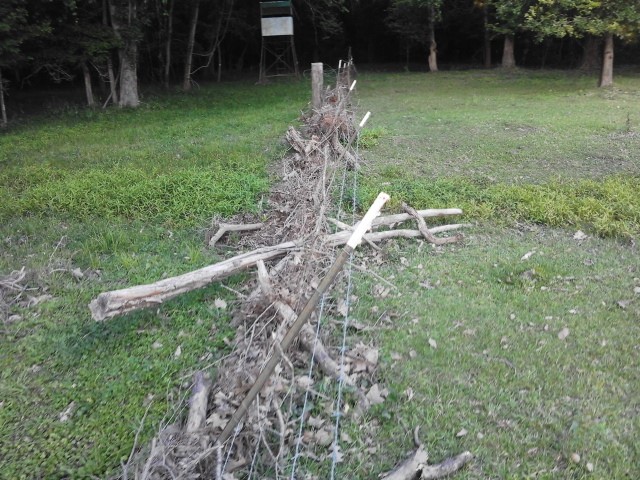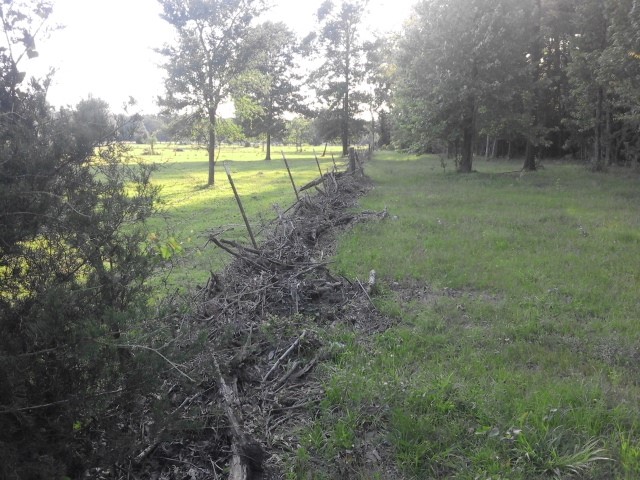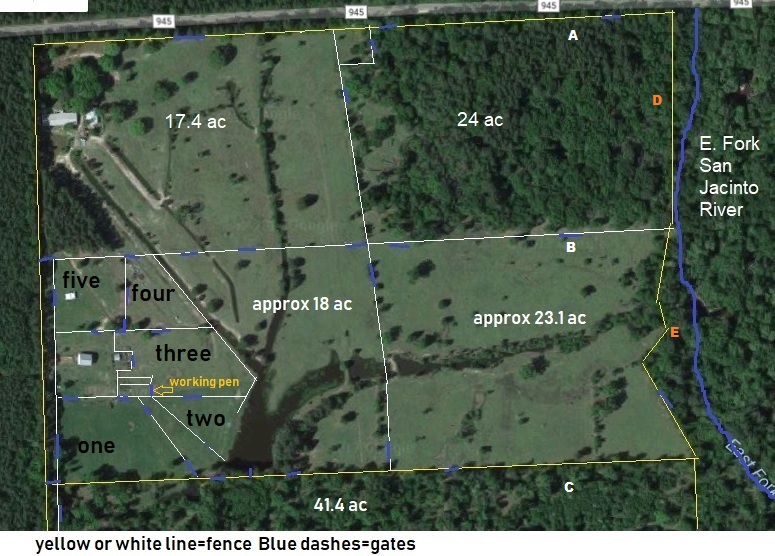libertygarden said:
In a barbed wire fence stretch of 225 yards with double H assemblies on both ends and using 1.33 T-Posts pounded 2' deep and spaced 10' apart, is a strong post needed every 5th T-Post? If so, will a 2 7/8" pipe pounded 2' deep suffice? The H assemblies are 6" treated pine posts, 4' deep, 8' apart, with 60 pounds of concrete per post and the rest back filled with road base.
Thank you.
It all depends on what you have going on with your fence and what kind of stock you have (and any neighbor might have)
If I had not put a big post in about every 150' and had used anything except HT, I wouldn't have a fence left standing. Can't tell it in this picture, but the wire IS still attached to the big post, which prevented the tee posts from just laying on over.

Looking the opposite direction:

(last 3-4 years,this has been at least an annual event for me)










